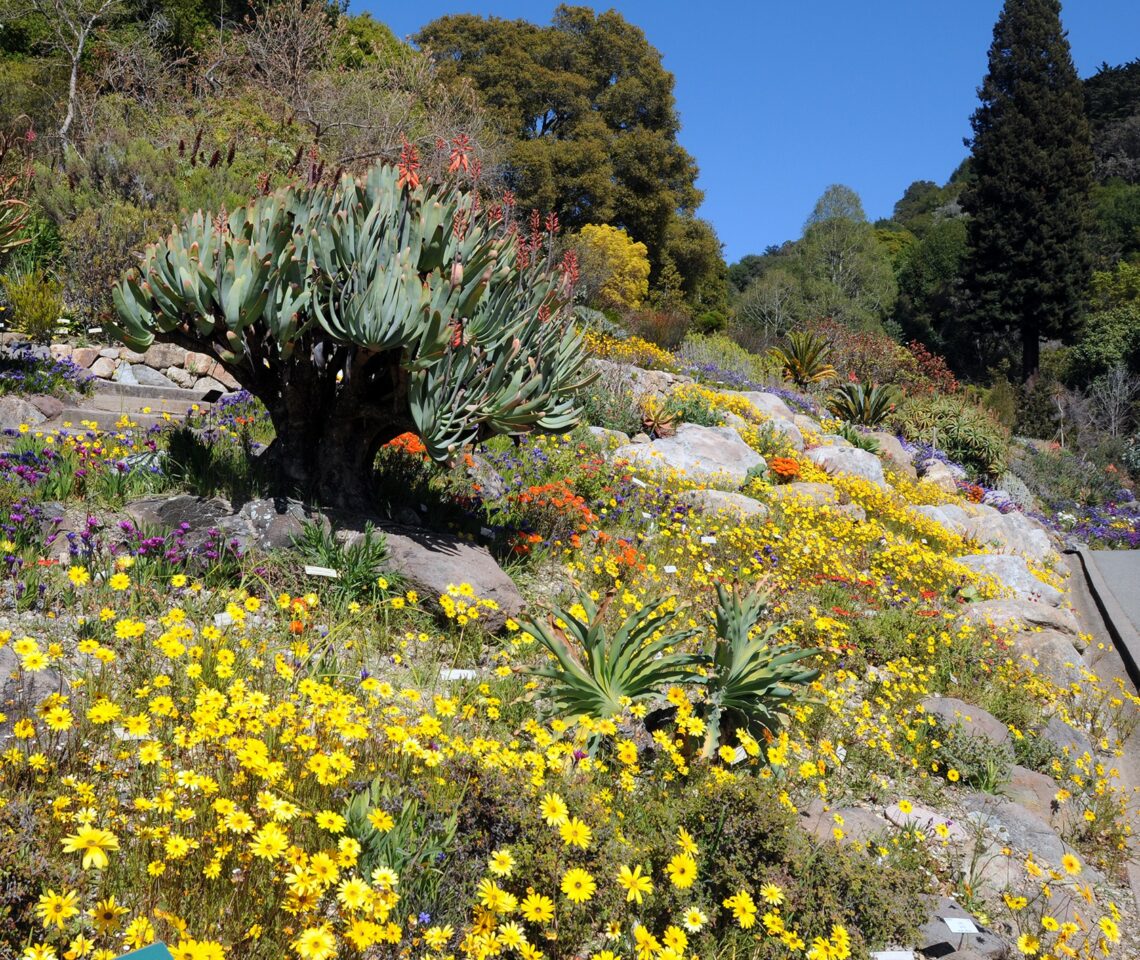
Press Release | by Krista Vossekuil, Development Director
The UC Botanical Garden at Berkeley (Garden, www.botanicalgarden.berkeley.
Due to dedicated and meticulous work from the Garden’s horticultural staff, thousands of yellow, purple, orange, fuchsia, and white flowers have created a blanket of vibrant jewel-like tones.
Southern African Area Horticulturist Ethan Fenner encourages visitors, “Now is a great time to see the floral display in the Southern African Area. Annuals, succulents, and geophytes (plants growing from bulbs and corms) are blooming in abundance in the Karoo beds.”
A variety of bird species are also attracted to the blooms. Garden staff have observed Hooded Orioles and Bushtits, among others, sipping nectar from the charismatic candelabra aloe (Aloe arborescens) in the collection since 1943.
Executive Director Lew Feldman says that he has been very appreciative of visitors’ responses to the display and encourages people to come see the beauty before it changes over the next couple of weeks. “The Garden offers a dynamic and immersive experience where everyone is welcome to observe and delight. Our mission is to create a place for people and plants to partner and thrive. We invite you to visit, engage, and cultivate your curiosity.”
Those who would like to visit the Garden must first make an online reservation at www.botanicalgarden.berkeley.
BLOOMS TO LOOK FOR
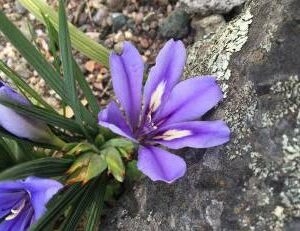
Babiana sambucina known commonly as “baboon flower.” The Garden’s accession of this irid is from the Western Cape of South Africa. Find it blooming in jewel
tones of lavender, blue, pink, and white.
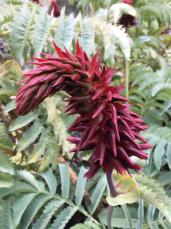
Popular in Bay Area horticulture, Melianthus major is a suckering shrub native to South Africa. It is commonly known as honey flower – indeed, large honey flower is a literal translation of its scientific name. The blossoms draw many native birds to their nectar, including Hooded Orioles and Black-headed Grosbeaks.

A charming and quirky plant from South Africa, Ferraria crispa is sometimes known as the starfish iris. As the common name suggests, it is an irid, a member of the family Iridaceae. The flowers are interestingly scented, some smelling like chocolate and others like vanilla.
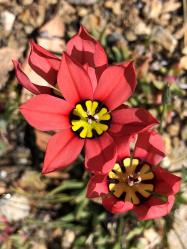
Perhaps somewhat easily overlooked, Sparaxis pillansii is best observed close up. In a genus of flowering plants called harlequin flowers, it belongs to the Iridaceae family with about 13 species endemic to Cape Province, South Africa. With fetching flowers of coral and yellow in spring, plants survive underground as corms through summer and grow again in the wet season.
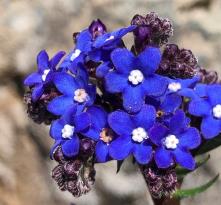
Anchusa capensis, also known as blue angel or Cape-forget-me-not, is native to much of South Africa’s driest regions. Tall stalks in spring yield masses of stunning cobalt blue flowers with feathery white centers.
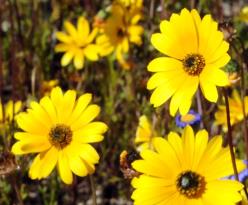
The Ursinia cakilefolia is perhaps the most abundant flower in the Southern African Collection currently, covering much of the ground in a blanket of yellow. It has a glossy black center, and its petals fold together in the evening fully closing at night. It is also known as the glossy-eyed parachute-daisy and is abundant in Namaqualand, South Africa.
ABOUT THE SOUTHERN AFRICAN COLLECTION
The Southern African Area includes plants from South Africa, Lesotho, Swaziland, Botswana, and Namibia. The plants of this region are famous for their diversity of flowers and forms. The range of microhabitats created by topography and climate fosters this incredible plant diversity. The Garden’s collection is especially rich in Mediterranean-climate flora of the Cape region. We feature plants from the Karoo habitat (with spring bulbs and annuals, blooming mostly February–May) and the fynbos plant community (chaparral-like plants with proteas, ericas, and restios). The collection also includes plants of the Eastern Cape region, which does not have a Mediterranean climate. Plants from the Cape region are well suited to conditions in California gardens and have become popular in horticulture; many are of ethnobotanical importance. Both the Cape region and California are two of the world’s biodiversity hotspots, but the Cape region contains more than 2½ times the number of species in 1/3 of the area. Demand for medicinal plants from the wild, habitat loss, illegal collecting, and competition from introduced species threatens many species with extinction.
